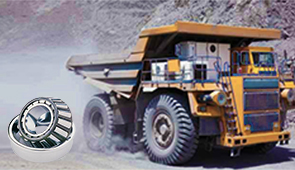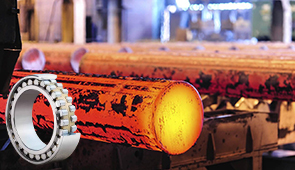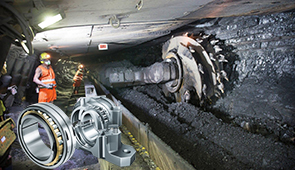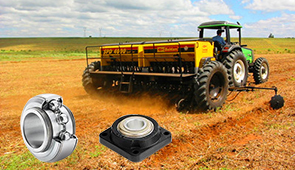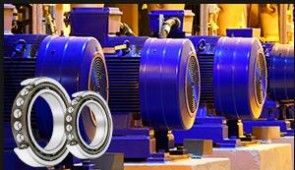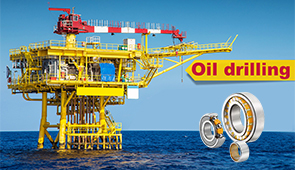Grease vs Lube: Understanding Lubrication for Bearings and More
Lubrication is a critical factor in ensuring the efficiency, longevity, and performance of mechanical systems, particularly in applications involving bearings and other moving components. However, the choice between grease and lube is not always straightforward and requires a deep understanding of their properties, applications, and limitations. Each type of lubricant offers unique benefits and is suited to specific operating conditions, from high-speed machinery to heavy-load environments. This article will explore the fundamental differences between grease and lube, their respective advantages, and how to determine the right choice for your equipment. Whether you’re a maintenance professional or simply curious about optimizing machinery performance, this guide will provide the clarity and insights you need to make informed decisions.
What is Grease?
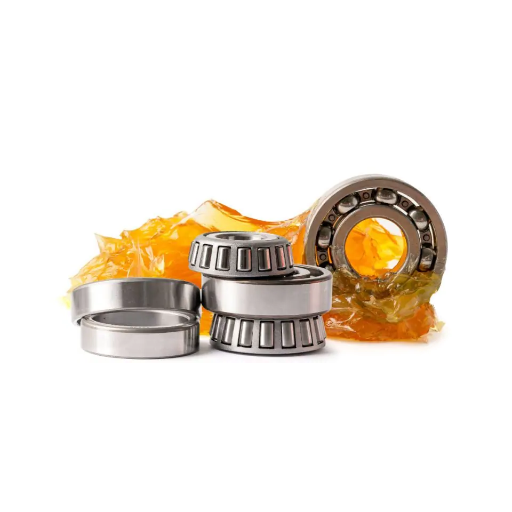
Definition and Composition of Grease
Grease is a semi-solid lubricant that forms when a thickening agent is dispersed in a liquid lubricant, usually an oil. The thickening agent can be a soap in most cases, although non-soap thickeners such as clay and polyurea are also used for special applications. This composition allows grease to remain in place under very high pressure and heavy weight and is useful where conventional lubricants may fail.
The main ingredients of grease include a base oil, a thickener, and additives. The base oil-rich component, either mineral or synthetic oil, provides the grease with its lubricating properties. The thickener gives the grease its consistency or mechanical stability and aids in the adherence of surfaces and repelling of leakage. The additives enhance the behavior of grease by offering properties like anti-wear protection, rust inhibitors, and oxidation resistance to enable the grease to perform well in adverse conditions.
Grease finds its primary application in scenarios demanding prolonged lubrication for parts that are hard to service regularly, such as bearings, joints, and gears. It bonds together and withstands environmental contamination to provide profound reliability and endurance. Grease, owing to its design characteristics, together with the enhanced performance due to the additives, offers a reliable solution for many industrial and engineering systems.
Common Uses of Grease
The grease operates as a valuable lubricant in situations that either put high demands on its functioning or give it the inability to perform in the same way as lubricating oils, thus in industrial, automotive, and mechanical applications. The lubrication of bearings, including ball bearings, roller bearings, and plain bearings, is one way in which grease is used. Its dough-like nature allows grease to ensure proper lubrication even when there is a load under high stresses and variable speeds. This reduces friction and heat unduly and prolongs the life of the equipment.
Another important function of grease is lubricating joints and couplings that receive heavy mechanical loads or irregular motion in operation. For instance, universal joints in vehicles or industrial machinery require a lubricant that stays in position and provides protection over a long period of time. The use of grease is preferred in these cases due to its thickened consistency and ability to resist being displaced in high-pressure or high-shear situations.
From another perspective, gears and other enclosed systems running in environments that are not the most hospitable are kept lubricated by grease. These may include mining, marine, and agricultural sectors, where the goods are often contaminated by water, dust, and debris. Grease creates a barrier against corrosion and wear, and therefore ensures that the provision of services from the equipment remains uninterrupted. It is with grease in such conditions that performance remains constant through reduced downtime and maintenance costs.
Advantages of Using Grease
- Superior lubrication in harsh conditions: Grease, unlike oils, lubricates well when working in extreme environmental conditions. Threatened with high pressures, fluctuating changes in temperature, and contamination by water and dust. Grease is stabilized to provide consistent protection and performance in mining, marine, and agricultural industries.
- Enhanced wear and corrosion protection: The grease, due to its semi-solid nature, serves as a protective barrier against wear and corrosion on moving components. The grease prevents convulsive metal-to-metal contact and environmental threats, thus prolonging the aging of equipment and increasing the chances of unplanned breakdowns.
- Reduced maintenance frequency: Grease’s ability to resist water-washing, from its ‘adhesive’ properties, allows it to work the longest on any surface compared to most liquid lubricants. This reduces re-lubrication requirements, hence time and direct maintenance costs.
- Improved seal protection: Grease helps to maximize the efficiency of seals for complementary protection from contamination. Minimizing water, dust, and debris ingress ensures that mechanical systems remain intact and viable under demanding operation scenarios.
- Cost-effective through downtime reduction: Grease helps save cost by limiting wear, avoiding repeated lubrication, and reducing the likelihood of equipment failure. Reduced downtimes, optimized production, and schedules of repairs and replacement parts are the benefits industries realize.
These benefits make grease an absolute choice for applications that require reliability and durability in harsh working environments.
What is Lube?

Definition and Types of Lubricants
Lubricants are a group of substances particularly formulated to reduce friction, accelerate wear, and moderate heat generation between surfaces in relative motion. This ensures an essential element in machinery, promoting operational efficiency and increasing the life of machinery under different operational environments. A lubricant generally consists of a base oil and some additives. These additives may impart various desirable properties, such as corrosion protection, thermal stability, and, generally, enhanced load-carrying ability.
- Liquid Lubricants: They are generally oils, including mineral oils, synthetic oils, and bio-oils. They are applied widely because they flow and cover great contact surface areas. They operate in many applications, including engines, the gear system, and hydraulic systems, and offer the advantage of temperature control and contamination removal.
- Grease: Semi-solid lubricant made from base oils, thickeners, and additives. Grease is used when reapplication of the lubricant continuously is not possible. Inconsistency allows it to stay where applied, thereby making it useful in lubricating bearings, bushings, and seals subjected to intermittent motion or conditions of extreme pressure.
- Solid Lubricants: Materials like graphite, molybdenum disulfide, and polytetrafluoroethylene (PTFE). Solid lubricants are used in conditions where liquids or semi-liquids would fail, such as at extreme temperatures or under vacuum. They excel in dry lubrication with minimal residues.
- Aerosols: Begin as pressurized cans. Aerosols are lubricants mixed with a solvent, which evaporates upon application. Good for brief maintenance and helps to reach areas that otherwise would be hard to get to.
Different types of lubricants are designed for different applications, so their performances are tailored to environmental operating conditions such as temperature, loads, and ecological concerns. Such knowledge allows the user of a machine to choose the best type of lubricant for operating it.
Common Uses of Lubricants
The functions of lubricants are vital for mechanical maintenance, efficiency, and lifespan. The foremost application consists of friction reduction between two moving surfaces so that components are spared from unnecessary wear and tear and enjoy longer working hours. They have to keep heat away from working equipment by supporting frictionless motion and acting as thermal conductors. Corrosion protection is another function of lubricants, whereby they help as a barrier for dirt that can retain moisture on metal surfaces.
Specialized lubricants are used by industrial sectors for machining processes-under cutting oils that cool and lubricate cutting tools. For automotive use, in heavy stresses and pressures, engine oils, transmission fluids, and greases are vital. In aerospace and marine environments, high-performance lubricants are formulated for specific considerations of prime temperature, pressure, and saline assault.
Another common use is hydraulic fluid, which transmits the power of a hydraulic system while providing lubrication and protection from oxidation. Furthermore, lubricants find application in tools and bearings servicing daily life: door hinges, bicycle chains, and household appliances. Choosing the proper lubricant for every application is paramount since failure to do so would result in equipment failure, high maintenance costs, and inefficiencies.
Advantages of Using Lubricants
Utilizing lubricants presents a plethora of advantages in numerous applications, such as better performance, cost savings, and equipment longevity. Here are five key advantages of using lubricants:
- Reduction of Friction: Lubricants constitute a thin film between the two moving surfaces, and hence reduce friction. Reduced friction causes much less wear to the parts and has been reported to improve the efficiency of machinery by as much as 30% under certain conditions pertaining to the maintenance of industrial equipment.
- Reduction of Wear and Tear: Brands of lubrication reduce the wear on surfaces and, thus, enhance the life of the component as they lessen direct contact between surfaces. Consequently, this lessens the frequency of replacement by 20-50%, which directly translates to cost savings.
- Heat Dissipation: Lubricants assist in heat dissipation from machines in operation. For example, motor oil helps lower the operating temperature of engines and prevents them from overheating while also cutting down energy wastage by 15%.
- Corrosion and Contamination: The various lubricants act as barriers to keep moisture and contaminants away from corrosion. Without such a lubricant, exposure to corrosive elements could degrade equipment at a rate five times faster.
- Energy Efficiency: Being able to reduce frictional mechanical losses, lubricants also improve the efficiency of energy transfer. This leads to a decrease in power demand for industrial machines in the order of 10-15%, which in turn ensures sustainable operations.
As can be seen, the right choice of and application of lubricants is critical to realizing these advantages and optimizing performance and operating costs.
Key Differences Between Grease and Lube

Viscosity and Consistency
Viscosity and consistency are basic properties that distinguish grease from lubricating oil (lube) and directly affect their use and performance in mechanical systems. Viscosity is described as the resistance to flow of a fluid, and it is a key variable for the lubricant. By virtue of viscosity, the lubricant forms a surface film at the working temperature and the pressure applied for protection. For instance, low-viscosity lubricant is used for a high-speed application where it is necessary to flow, while a high-viscosity lubricant is employed in applications involving heavy loads and slow movement, wherein it provides good film strength.
Consistency, however, is a property specific to grease and decides on its stiffness or semi-solid attributes. According to the NLGI, its consistency is rated on a scale ranging from 000 (fluid-like) to 6 (very hard). Grease’s consistency implies that it can sit still rather than flow inordinately, suitable for vertical or sealed applications where oil would otherwise seep out. Contrary to conventional oil-like lubricants, grease is an excellent long-term, maintenance-free protective option for components that are accessed infrequently, while also offering protection against contamination dissolution and washout.
Comparing and utilizing the correct viscosity or consistency for a particular application will yield optimal results, immensely reduced wear, and prolonged life.
Application Methods
Greasing involves careful application technology and consideration of industry guidelines to assure maximum performance under all operating conditions. The common methods are manual application, grease guns, painting, and automated lubrication systems. Application by hand is suited for low-volume applications. Essentially, small amounts are placed manually onto an ointment area using a brush or by the user’s bare hands. With grease guns, the grease is applied under pressure into bearings or other confined spaces. This method is used when more precise and controlled delivery is required.
Application by painting provides an even application over a large surface area, with the grease, and thus avoids other portions of localized wear. Automated lubrication methods are the real technological wonder of today, providing the timed doses of grease with pinpoint precision to the most critical components, with very little manual effort. These are best used in high-volume, continuous production environments, as they lower labor costs and eliminate human errors that occur in manual greasing, thus improving the overall reliability of the systems.
Some of the criteria on which the choice of application may rest include equipment type, working conditions, and grease specifications. The proper method will reduce waste, provide better efficiency of the equipment, and prevent the common problems of over-lubrication or contamination of the grease. This ensures uninterrupted operation and a longer life for the machinery.
Longevity and Maintenance
The right maneuvering shall make the equipment last longer and be maintained in perfect condition, meaning the equipment has to first go through the application of advanced technologies, correct methodology, and data insights. Monitoring lubrication condition regularly and conducting oil analysis for oil or grease sampling provides valuable data about the wear situation, contaminant levels, and current state of lubrication. That maintenance philosophy ensures decisions are made, bringing costs down on downtime, and spotting potential failures before they become catastrophic.
Automated lubrication systems provide yet another level of precision in delivering lubricant, whereby the delivery of grease or oil is made according to the peculiar demands of an individual component of machinery. Due to an integration with IoT sensor technology, they provide real-time metric information, therefore sharpening and enhancing their accuracy and efficiency. In tandem, these tools help operators keep their machinery continuously lubricated through changing conditions and ultimately add a great deal of miles to the life of equipment while reducing overall maintenance costs.
Employment of the digital method in tandem with conventional machinery maintenance will guarantee that machinery will perform at its best under any circumstance, whilst injustices brought about by improper or improper practices will be avoided. This clash of digitally inspired and traditionally deposited now defines modern-day equipment management.
Choosing the Right Lubricant for Your Needs
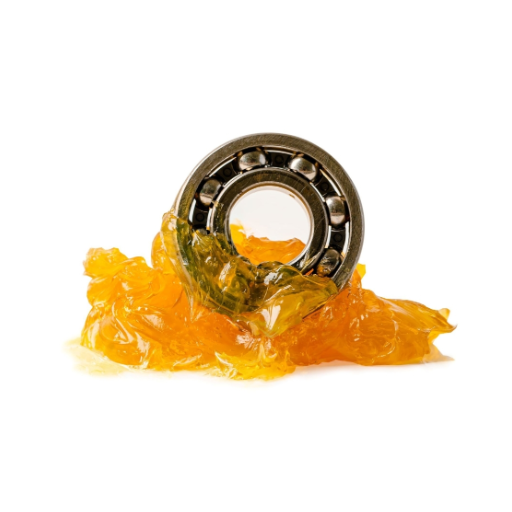
Factors to Consider When Selecting Grease or Lube
When the right grease or lubricant for a particular application is selected, many technical factors must be evaluated that could contribute to optimal performance or equipment protection. Each one of these factors affects the proper functioning, reliability, and longevity of your machinery.
- Temperature Range of Operation: The Thermal stability of a lubricant is an essential property in performance, according to the working conditions given. A high-temperature environment needs a high dropping point with oxidation resistance, while low temperatures require the product to have low viscosity with excellent flow performance.
- Load-Carrying Capacity: Under heavy loads, lubricants must be subjected to extreme pressure (EP) additives that enhance the lubricant’s ability to prevent wear and resist mechanical stresses against these components while working under heavy loads.
- Viscosity and Compatibility: Viscosity is an indication of the lubricant’s thickness and film strength, and ability to flow under operational stresses. A lubricant with the right viscosity impedes the motion of friction while ensuring the path of least resistance is paved with adequate lubrication. Plus, compatibility with greases, seals, and materials in use is required to avoid chemical degradation of either the lubricant or the material.
- Resistance to Water and Dust: In conditions that are wet and dusty for machinery operation, it becomes important to select lubricants that are resistant to water and contamination so that corrosion, emulsion formation, or particle clogging does not occur. Lubricants with good sealing properties are thus the best option in such an environment.
- Application Method and Reapplication Frequency: Knowing the application requirements, such as the intervals for manual greasing or an automatic dispensing system, determines the formulation of the lubricant. Some greases, when applied less frequently, cut down on maintenance.
When users combine these factors with innovations in formulating lubricants and technology in digital monitoring systems, they can turn decisions into data-based decisions gravitating toward performance optimization. Assessing equipment demands and environmental factors holistically will help users to choose the right lubricant solution that renders equipment highly efficient and long-lasting.
Applications in the Automotive Industry
The automotive industry depends largely upon advanced lubricating solutions to assure vehicle reliability, to prolong machine life, and to emphasize performance. Five uses for lubricants in the automotive field can be detailed below:
- Engine Lubrication: The engine oil in an engine reduces friction between moving parts, minimizes wear, and in the process, brings about better fuel economy. High-grade engine oils can bring 2% savings in fuel according to industry studies, hence minimizing carbon emissions significantly as time passes.
- Transmission Systems: Fluid lubricants for transmissions ensure smooth gear changes and can protect gears in high-pressure situations. The transmission lubricants find their applications in both automatic and manual transmissions for a better torque response and system durability.
- Wheel Bearings and Chassis: Greases for wheel bearings and under-chassis components protect against extreme pressure and contamination from dirt, dust, and water. Proper oiling reportedly helps to extend bearing life by 50%.
- Cooling Systems: Coolant fluids with lubricating additives help control the engine temperature while preventing corrosion within the cooling system. This anti-corrosive solution is active in extreme temperatures, thereby guaranteeing a stable operation.
- Differentials and Axles: The oils specially meant for gear-lubrication in differentials and axles reduce friction in high-load conditions. These oils are most useful in heavy-duty vehicles, where it is shown they also decrease vibrations and noise and increase the overall longevity of the drivetrain.
Proper application of these lubricating technologies will truly make automotive systems move smoothly, lower maintenance costs, improve energy efficiency, and contribute towards sustainable goals. It is a crucial factor in coping with the demands of modern vehicles.
Applications in Industrial Settings
Advanced lubricant techniques and methods find a major application when industries go for extreme loads or temperatures, or indeed undergo continuous duty cycles. They help in boosting throughput and reliability while, in turn, drastically decreasing running costs. Mentioned below are the five major applications in industrial fields:
- Rolling Mills and Heavy Machinery: Lubricants remain crucial for those giant excavators, bulldozers, and loaders that go through severe mechanical stresses. In the meanwhile, it has been stated that well-performing oils enhance component life by around 30%, thereby minimizing the whole machinery and operation downtime due to repairs have been minimized.
- Manufacturing and Assembly Lines: Lines with industrial machinery like conveyor systems, presses, and robotic arms need precision lubrication to ensure synchronization and efficiency. Proper lubrication thus warranted a 20% improvement in uptime in operations in automated manufacturing environments.
- Power Generation: Turbines, generators, and compressors in the power plant work under high thermal and mechanical stresses and need advanced synthetic lubricants to be at their peak performance. Records claim that well-lubricated equipment sees a boost of 15% in energy output efficiency.
- Steel and Metal Processing: Since rolling mills and forging machines come under continuous friction and heat, heat-resistant lubricants become requisite. These oils can reduce energy consumption during operation by 10 percent while lessening surface wear on the material being processed.
- Food and Beverage Industry: Food-grade lubricants are made especially for processes requiring strict standards of hygiene. In such applications, these lubricants help meet safety regulations like NSF H1, reduce contamination risks, and increase machinery life expectancy by around 25% in packaging and processing plants.
When combined with these special lubricating solutions, industrial plants stand to gain improved productivity, operational reliability, and cost efficiency.
Practical Tips for Effective Lubrication
Best Practices for Using Grease
For maximum performance and equipment life, proper techniques in greasing for industrial applications are required. First of all, selecting the correct grease must be done with respect to machinery specifications and operating conditions-temperature, load, and speed. Multi-purpose greases will be fine for general lubrication, but high-performance and specialty greases like lithium complex or synthetic grease are required under harsh environmental conditions.
Application methods also need care, and even more so. Over-greasing leads to overheating and damage, while under-greasing may leave a surface insufficiently lubricated and prone to wear. Calibrated grease guns can perfectly dispense exact amounts following manufacturers’ recommendations for relubrication intervals. The lubrication points on a piece of equipment should be kept clean, as contamination could compromise performance and may lead to premature failure.
Monitoring and maintaining grease quality is very important. Regular analysis-consistency, viscosity, contamination-may inform about the grease condition and advertise some mechanical issues. Automated lubrication systems and vibration sensors with the predictively maintained equipment might make reliability a level up and reduce downtime.
Following these best practices and considering a careful, data-driven lubrication management would mean industries cut operational hazards, keep equipment in their best operating condition, and gain on the long-term cost-saving side.
Best Practices for Using Lubricants
- Choose Lubricants Based on Application Demands: Selecting the correct lubricant for specific applications ensures peak performance and greater life of the engine. These decisions should be based on application criteria like operating temperatures, load limits, speed, and environmental exposure. For instance, heavy-load machinery running at high temperatures may demand synthetic oils with high thermal stability and viscosity index.
- Monitor Viscosity Regularly: Arguing one factor among others, viscosity stands highest in determining the frictional property that lubricants possess. Measuring viscosity levels at periodic intervals-laboratory analyses or even onboard automation tools- can warn about contaminants, degradation, or even wrong applications. Proper viscosity maintenance reduces all stresses on the equipment, thereby avoiding premature failures.
- Practice Proper Storage and Handling: Lubricant contamination starts from inappropriate storage conditions. They should be stored under clean, dry, temperature-controlled conditions away from direct sunlight and moisture sources. Handling tools, i.e., pumps and dispensing units, among others, should also be kept free of contaminants. The more dirt or particles that get kicked into the machinery, the higher the possibility of weakened performance due to contamination.
- Schedule Maintenance Based on Performance Criteria: Setting maintenance intervals based on performance and environmental parameters can ensure proper lubrication periods while eliminating over- or under-lubrication. Various technologies, including IoT sensors and machine learning algorithms, can analyze real-time data to recognize the best points in time for re-lubrication and early warning signs of lubricant issues. Predictive maintenance helps in both cutting down costs and increasing reliability.
- Train Employees in Proper Lubrication Techniques and Safety Measures: Properly trained maintenance teams can increase the proper usage of lubricants and minimize errors due to human faults. Proper training is needed on lubricant selection, application procedures, and health and safety. Frequent workshops and certification programs help technicians stay updated on evolving industry standards and lubricant technology advancements.
Following these best practices, using accurate data supported by advanced tools, would afford an efficient application of lubricants while enhancing OEE efficiency.
Common Mistakes to Avoid
- Incorrect Lubricant Selection: Inappropriate use of lubricant type or viscosity for a certain application will cause excessive wear, overheating, or failure of the equipment. It is necessary to know the machinery requirements, operating conditions, and lubricant properties in extensive detail to prevent this situation.
- Over-Lubrication or Under-Lubrication: When grease builds upon a component, it raises the operational resistance of that component and may even damage the seals. On the contrary, under-lubrication can cause thin films and more friction. These risks can be reduced with effective monitoring and precision application tools like an automatic lubrication system.
- Ignoring Contamination Control: Contaminants like dirt, water, or metal particles diminish the performance of lubricants and increase wear. Setting up proper filtration with regular sampling and contamination analysis will guarantee maintenance of lubrication system cleanliness standards.
- Improper Storage and Handling: When lubricants are stored in areas with extreme temperature variations or high humidity, their quality degrades. Use sealed containers, store in a temperature-controlled environment, and implement FIFO inventory management to keep the shelf life as long as possible.
- Lack of Regular Inspection: When regular inspection fails to be performed on lubrication systems and equipment, it hinders early detection of problems. By means of integrating these highly accurate techniques: vibration analysis, infrared thermography, and spectral oil analysis, into a regular maintenance schedule, this allows for the identification and resolution of issues at an early stage.
Strictly avoiding these common errors and surmounting them with more stringent practices, leading-edge instrumentation, and continual education of the technicians, will promote far better system results and thereby much lower downtime expenses.
Frequently Asked Questions (FAQ)
Q: What is the difference between grease and lube?
A: The main difference between grease and lube lies in their composition and application. Grease is a thickened lubricant that often contains a base oil, thickeners, and additives, while lube typically refers to liquid lubricants such as oil. Grease is often used in situations where a longer-lasting lubricant is required, such as in bearing lubrication, whereas oil is more suitable for high-speed applications.
Q: When should I use grease vs lube?
A: You should use grease when you need to lubricate moving parts that require a thicker lubricant to adhere to surfaces, such as wheel bearings or gearboxes. On the other hand, lube or oil is used in applications where a low-viscosity fluid is needed for effective lubrication and cooling.
Q: Can I use grease in a gearbox?
A: Yes, you can use grease in a gearbox, especially if it is specifically designed for grease lubrication. However, many gearboxes are optimized for oil-based lubricants, so it’s essential to check the manufacturer’s recommendations. Grease can provide better adhesion and reduce friction in certain conditions, but oil may be better suited for high-speed applications.
Q: How does grease help prevent rust and corrosion?
A: Grease helps prevent rust and corrosion by providing a protective barrier against moisture and contaminants. The thickener in grease, along with its additives, can seal against ingress, making it an effective choice for protecting metal surfaces in harsh environments.
Q: What are the benefits of using grease over oil?
A: The benefits of using grease over oil include its ability to adhere to surfaces, reduce friction and wear, and provide longer-lasting lubrication. Grease can also stay in place better than oil, which can leak out in certain applications. Additionally, grease often contains additives that enhance its performance, such as solid additives or metallic soaps.
Q: What is the ideal viscosity for grease or lube?
A: The ideal viscosity for grease or lube depends on the specific application and operating conditions. For grease, a higher viscosity may be preferred in high-load applications, whereas oil viscosity is crucial for ensuring adequate flow in high-speed or low-temperature scenarios.
Q: Can I mix grease and oil?
A: Mixing grease and oil is generally not recommended due to potential incompatibility issues. Different types of greases and oils can have varying chemical compositions and additives, which may lead to decreased performance and service life. If you must mix, ensure compatibility by consulting product data sheets.
Q: What are some common additives found in grease?
A: Common additives in grease include anti-wear agents, rust inhibitors, and extreme pressure additives. Solid additives like molybdenum disulfide or graphite can enhance performance under high load conditions. These additives improve the grease’s ability to adhere to surfaces and provide additional lubrication.
Q: How do I know if I need to repack grease?
A: You may need to repack grease if you notice a decrease in performance, such as increased friction, noise, or heat in the operating equipment. Regular maintenance checks can help identify the amount of grease remaining and whether it has degraded over time, especially within the bearing surfaces.
Q: What is the role of thickeners in grease?
A: Thickeners in grease play a vital role in determining its consistency, viscosity, and stability. They help the grease adhere to surfaces, preventing leakage and ensuring that it stays in place to lubricate moving parts effectively. Common thickeners include lithium-based greases and metallic soaps, which enhance the grease’s performance across various applications.
UCTH213-40J-300 with Setscrew(inch)
CNSORDERNO: Normal-duty(2)
TOGN: UCTH213-40J-300
SDI: B-R1/8
SD: 2 1/2
UCTH212-39J-300 with Setscrew(inch)
CNSORDERNO: Normal-duty(2)
TOGN: UCTH212-39J-300
SDI: B-R1/8
SD: 2 7/16
UCTH212-38J-300 with Setscrew(inch)
CNSORDERNO: Normal-duty(2)
TOGN: UCTH212-38J-300
SDI: B-R1/8
SD: 2 3/8
UCTH212-36J-300 with Setscrew(inch)
CNSORDERNO: Normal-duty(2)
TOGN: UCTH212-36J-300
SDI: B-R1/8
SD: 2 1/4
UCTH211-35J-300 with Setscrew(inch)
CNSORDERNO: Normal-duty(2)
TOGN: UCTH211-35J-300
SDI: B-R1/8
SD: 2 3/16
UCTH211-34J-300 with Setscrew(inch)
CNSORDERNO: Normal-duty(2)
TOGN: UCTH211-34J-300
SDI: B-R1/8
SD: 2 1/8









